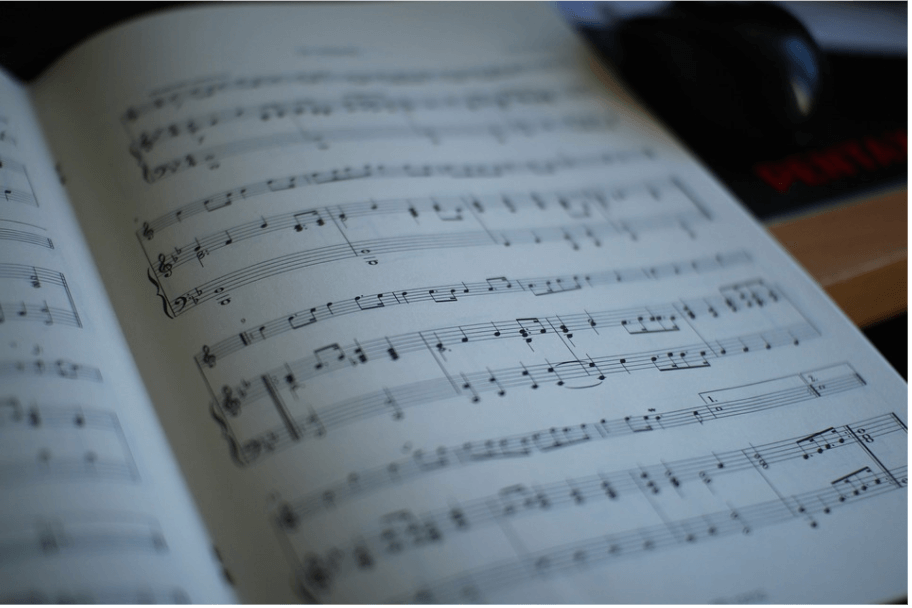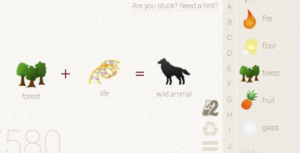In this article, you’ll learn about the types of notes, how to read treble and bass clefs, the time signature, and tempo. Music is a language that can be difficult for beginners to understand. It’s not always clear what note should be played in a given measure or why certain rhythms sound good together. In order to make sheet music easier to read and learn from, we created an easy guide that will teach you everything you need to know before diving into reading your first piece of music! Read this article if you want to learn how to read sheet music.

Learn Some Basic Symbols
In order to read sheet music, you first need to learn some basic symbols. Music is composed of a number of symbols, the most fundamental of which are the staff, clefs, and notes. These essential components may be found in all music, and learning to read music requires a thorough understanding of them.
The staff is made up of five horizontal lines that each represent a different octave. Notes are written on the staff using one of four clefs: treble, bass, alto, or tenor. The treble clef is used for high notes, and the bass clef is used for low notes. The alto and tenor clefs are used in music that has a wide range of notes. The notes on the staff inform us which note letter to play and for how long on our instrument. Each note is made up of three parts: the note head, the stem, and the flag.
In order to learn these basic symbols, you should find easy to learn piano songs with sheet music and play along. By following the notes on the staff as you play, you will begin to better understand how they work together.
Pick Up The Rhythm
If you want to play music, you must first learn how to read the rhythm or meter. The meter is the beat you use when dancing, clapping, or playing along with your instrument. The time signature is a symbol used at the beginning of a piece of sheet music that tells us how many beats there are in each measure and what type of note gets one beat.
There are four note values: whole notes, half notes, quarter notes, and eighth notes. A whole note gets four beats, a half note gets two beats, a quarter note gets one beat, and an eighth note gets half a beat. The time signature tells us how many of each type of note we will be playing in one measure.
For example, the time signature 4/4 means there are four quarter notes in one measure. If you see a time signature of 3/8, that means there are three eighth notes in one measure. These examples will help you better understand how to read the time signature.
Learn The Scales
Before you start playing a piece of music, it’s important to know the scales used in that song. Scales give us a clear direction as we play certain notes over and over again until we reach the end of the song. A scale is made up of eight successive notes, such as C, D, E, F, G, A, B, C in the C major scale. An octave is defined as the distance between the beginning and endnotes of a C major scale. It’s crucial to practice the C major scale because after you’ve mastered it, the other major scales will start to fall into place.

Practice Often
Now that you’ve learned the fundamental symbols for sheet music, it’s time to apply them. Keep practicing what you’ve learned by playing easy songs on piano or guitar with sheet music. By practicing often, you will begin to memorize common rhythms and gain better control over your instrument. Sheet music is a great resource for beginners because it provides all of the information needed to play a song. Try to make a habit of practicing sheet music, and you will learn to read sheet music quickly.
Record Yourself
One of the best ways to improve your reading skills is to record yourself playing a piece of sheet music. Listening back to your recordings will help you better understand where you may be making mistakes and what areas need more practice. Recording yourself also allows you to track your progress over time. You should aim to be able to play a piece of sheet music perfectly from beginning to end before moving on to new songs.
Start With Easy Songs
If you’re a beginner, you should start off with learning very easy songs. It’s important to learn the basics before moving on to more advanced music. You can find plenty of sheet music for beginners in books and online. Make sure that once you’re comfortable playing simple notes and rhythms, move up to slightly harder sheet music. As you continue to improve, you will eventually be able to play more difficult pieces. Some easy songs that you can practice include songs such as Over The Rainbow, Piano Man, and Heart and Soul.
Don’t Be Afraid To Ask For Help
If it isn’t going well and you don’t understand something, don’t be afraid to ask a friend or teacher for help. Music can be difficult to read at first, so if you’re having trouble, there are many tutorials, videos, and articles that can assist you. With a little bit of practice and patience, you will be reading sheet music like a pro in no time!
Sheet music can seem intimidating for beginners, but with a little practice and guidance, it’s easy to understand. In this article, we’ve discussed the basics of reading sheet music including the types of notes, time signatures, and scales. We’ve also included a list of songs to play as you continue to improve your skills. Remember, sheet music is a great resource for beginners as it provides all the information needed to play a song. Practice as often as possible and keep track of your progress by recording yourself playing sheet music. Now that you’ve learned how to read sheet music, why not try playing some easy songs? Good luck!





